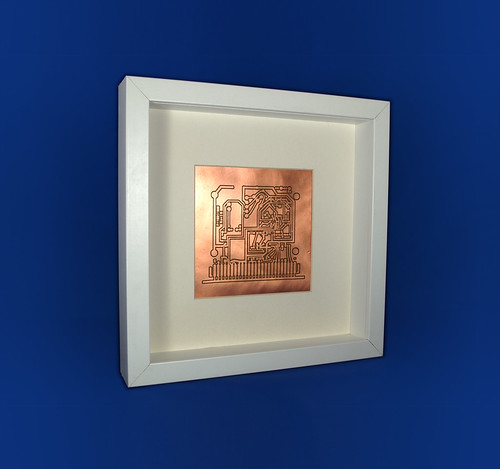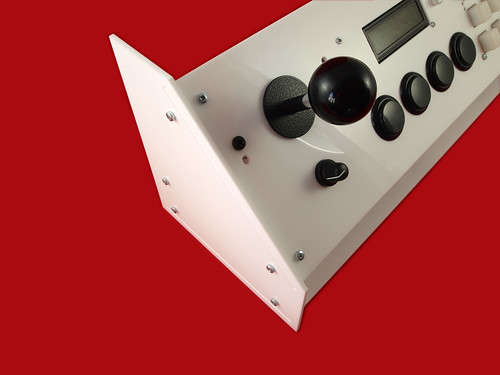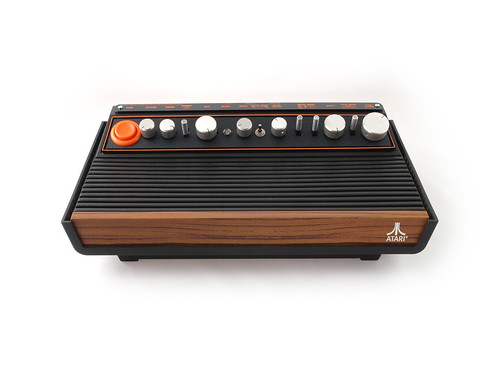 (Click photo for Flickr album)
(Click photo for Flickr album)Dirty Circuits is a collection of framed limited edition prints and etched copperclad laminates inspired by the printed circuit boards of classic vintage synthesisers.
In the dark and dusty interiors of the music machines of an abandoned era we discover a compelling world etched in copper. Hidden beneath ageing components the paths and patterns of these forgotten circuits evoke systems that extend beyond the merely electronic towards the mechanical, the architectural and even the organic.
For the prints I used Daler-Rowney water soluble block printing ink on 300g/m2, 100% rag, acid-free and ageing resistant grabado printing paper. A hand operated screw press was used to print from a 1 mm thick copper plate which was etched in a tank of sodium persulfate. The press was built in my workshop from an original design.
For the etched laminates I used 0.8 mm and 1.6 mm thick glass epoxy FR-4 boards clad with a 0.035 mm thick layer of copper. The boards were etched in a tank of sodium persulfate. Following the etching process the reddish-brown tarnish of the exposed copper is polished to a warm textured lustre giving a brighter more reddish-gold appearance. The work is then sealed using Servisol Plastic Seal 60. This durable plastic insulator protects the copper from further oxidisation and surfaces the work with a semigloss finish.







